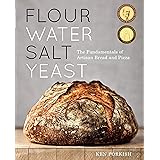Grasping fundamental vocabulary is often considered a crucial step when one embarks on the journey of learning English. Words for everyday objects, such as those found in a kitchen or a grocery store, are particularly important. The brief video above provides an excellent visual introduction to some common English vegetables, laying a solid foundation for your vocabulary acquisition.
As language skills are developed, it becomes apparent that mere recognition of words is only the beginning. Further understanding, encompassing pronunciation, usage in context, and even cultural significance, is typically required for true fluency. Therefore, expanding upon this foundational vegetables vocabulary is not merely beneficial; it is frequently deemed essential for effective communication.
Expanding Your Vegetables Vocabulary Beyond the Basics
The video introduces a selection of staple vegetables that are frequently encountered in English-speaking countries. These include cabbage, lettuce, onion, potato, tomato, spinach, cucumber, carrot, broccoli, cauliflower, pepper, and garlic. Each of these items plays a significant role in various cuisines and diets. For instance, the versatile potato is often baked, fried, or mashed, whereas lettuce is commonly utilized in salads.
To deepen one’s understanding, it is often helpful for learners to think about vegetables in broader categories. Imagine if you were asked to describe these items without pointing; a richer vocabulary would certainly be needed. Furthermore, a categorization approach can aid in the memorization and recall of new terms.
Categorizing Common English Vegetables for Easier Learning
The vast world of healthy vegetables can be made more manageable by grouping them based on their botanical characteristics or culinary uses. This method often helps in creating mental connections between words, thereby enhancing retention.
- Leafy Greens: This category encompasses vegetables known for their edible leaves. Spinach and lettuce, as seen in the video, are prime examples. Other popular options include kale, collard greens, and Swiss chard. These are frequently consumed raw in salads or lightly cooked.
- Root Vegetables: These are vegetables where the root part of the plant is eaten. Potatoes, carrots, onions, and garlic are all excellent examples from the video. Further additions might include beets, radishes, and parsnips. Typically, these are grown underground and provide substantial nutrients.
- Fruiting Vegetables (Botanically Fruits, Culinarily Vegetables): This intriguing category includes items that are botanically fruits (containing seeds and developing from the flower’s ovary) but are used as vegetables in cooking. Tomatoes, cucumbers, and peppers are clearly demonstrated in the video. Zucchini, eggplant, and pumpkins are also considered part of this group. Their sweet or savory profiles dictate their culinary application.
- Cruciferous Vegetables: Known for their distinct, often slightly bitter taste and numerous health benefits, this group includes broccoli, cauliflower, and cabbage from the video. Brussels sprouts and bok choy are also members of this family. They are often roasted, steamed, or stir-fried.
In addition to these, there are legumes (like peas and beans), stalks (celery, asparagus), and gourds, each with their own unique English names of vegetables and culinary applications. Consequently, a comprehensive approach to learning vegetables vocabulary is highly recommended.
Using Vegetable Names in Everyday English Conversations
Simply knowing the names of vegetables is one thing; however, integrating them into daily conversation is quite another. Practical application often solidifies understanding and improves fluency. Imagine if you were at a grocery store or describing a meal to a friend.
For instance, when grocery shopping, you might say, “I need to pick up some fresh lettuce for a salad,” or “Are there any organic carrots available?” In a restaurant, an order might be placed like, “Could I have the chicken with a side of steamed broccoli?” Moreover, discussing health and nutrition frequently involves the mention of various vegetables, such as, “Eating plenty of spinach is good for your iron intake.”
Formal transitions are often employed to connect ideas within a conversation or a written piece. Likewise, when talking about cooking vegetables, one might transition from discussing ingredients to preparation methods: “The recipe calls for a large onion, and then it is instructed that the onion should be finely diced.”
Beyond the Name: Exploring Culinary Uses and Preparation
To truly master vegetables vocabulary, it is useful to associate each vegetable with common verbs and phrases related to its preparation and consumption. For example, a potato might be “baked,” “boiled,” “fried,” or “mashed.” A cabbage can be “shredded” for coleslaw or “braised.”
Common cooking verbs that are frequently paired with vegetables include:
- Chop/Dice/Slice: To cut into smaller pieces.
- Peel: To remove the outer skin.
- Roast/Bake: To cook in an oven.
- Boil/Steam: To cook in hot water or steam.
- Sauté/Fry: To cook quickly in a pan with a small amount of fat.
Consequently, by connecting vocabulary words with their functional uses, a deeper level of comprehension is typically achieved. Imagine if you are planning a meal; you would undoubtedly utilize this expanded vocabulary.
The Nutritional Powerhouse of Vegetables
Beyond their culinary appeal and importance in daily language, vegetables are celebrated for their nutritional value. It is widely understood that a diet rich in vegetables contributes significantly to overall health and well-being. For example, carrots are famously known for their beta-carotene content, which is converted to Vitamin A in the body. Similarly, peppers, especially the bell variety, are excellent sources of Vitamin C.
Moreover, leafy greens like spinach are packed with iron and other essential minerals. The regular consumption of such items is often associated with a reduced risk of various health conditions. Therefore, when discussing food terms, the health benefits of vegetables are frequently highlighted, providing another layer of context for language learners.
Imagine if you were explaining the benefits of a balanced diet to someone; a precise vocabulary for vegetables would be indispensable. Furthermore, understanding the nutritional aspects can add a more sophisticated dimension to your discussions about food in English. The role of vegetables vocabulary is indeed extensive, extending from the grocery list to scientific discourse.











